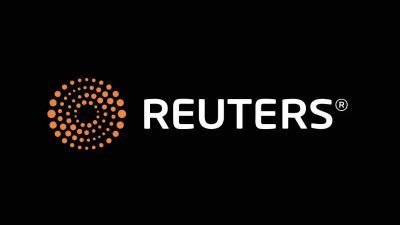June 28 (Reuters) - Richmond Federal Reserve Bank President Thomas Barkin on Friday said that while he believes the U.S. central bank's interest-rate hikes to date will be enough to bring inflation down eventually, policy may not be as tight as is widely thought.
"It is too soon to tell, but there's one way to find out: Proceed deliberately while keeping a close eye on the real economy," Barkin said in remarks prepared for delivery to the Global Interdependence Center in Paris. "And that's what I am doing."
After raising U.S. short-term borrowing costs aggressively from March 2022 to July 2023, the Fed has left its target policy rate in the 5.25%-5.5% range for nearly a year. None of the Fed's policymakers believe more rate hikes are likely to be necessary to bring down inflation, but they disagree on how much longer they should wait before cutting rates.
The economy has been stronger than most had forecast in the face of high borrowing costs, and Barkin said on Friday that while goods inflation has returned to pre-pandemic levels, purveyors of services including housing may still have room to push prices higher.
Barkin offered no hint on his preferred timeframe for rate-cutting, but he gave a detailed account of how most economic forecasters, including at the Fed, were repeatedly wide of the mark in the wake of the extraordinary circumstances of the pandemic lockdowns and the recovery that followed.
The labor market, for instance, far from buckling as the Fed raised borrowing costs, remained robust, with the unemployment rate staying at or below 4% for the longest string of months since the 1960s.
The bond market's yield curve inversion -- in which longer-term borrowing costs are lower than shorter-term ones, often a sign of expected future economic weakness -- has so far proved to be a false signal for a recession that has not arrived.
And while inflation by the Fed's targeted measure dropped from its mid-2022 peak of 7.1% to around 2.5% at the start of this year, it remains above the Fed's 2% goal and in March and April defied expectations by restrengthening to a 2.7% pace.
A fresh read on the personal consumption expenditures price index is due on Friday, and economists expect it to show inflation eased a bit in May.
"I do believe there are still lags playing out — and that all this tightening will eventually slow the economy further," Barkin said. "At the same time, given the remarkable strength we are seeing in the economy, I’m open to the idea that r-star has shifted up somewhat." R-star, also known as the neutral rate, is the level of interest rates that neither constrains nor stimulates a healthy economy.
A rise in the neutral rate would mean the Fed's policy rate would also need to be higher to exert the same amount of restraint on the economy. Several Fed policymakers have recently increased their own estimates of the rate, which is not observable in real time.
"Agility is key," Barkin said. "We get new information every day, and we must and do adjust accordingly."
Reporting by Ann Saphir; Editing by Leslie Adler
